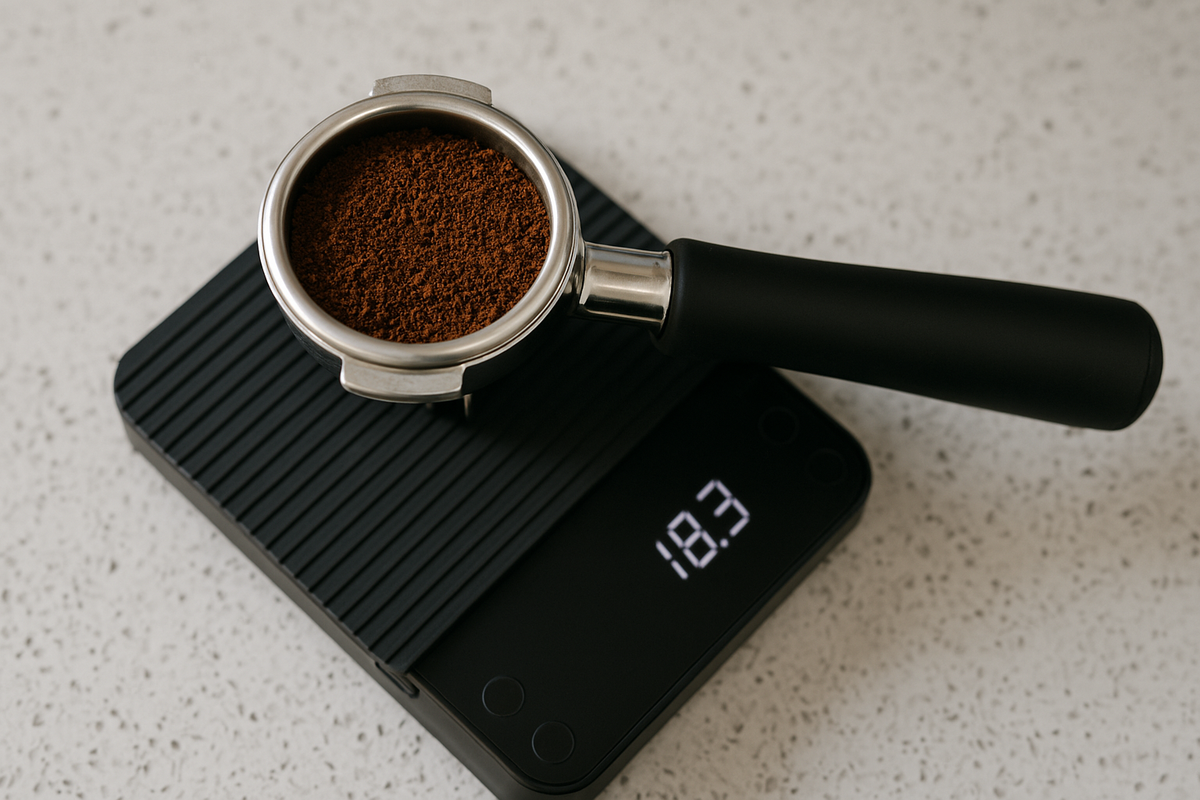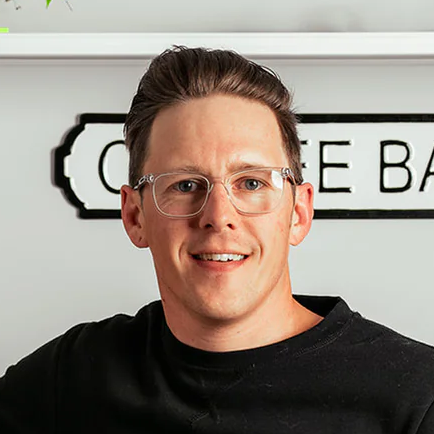
How Much Coffee Should You Use in a Portafilter?
|
|
Time to read 2 min
Brew better with Brewedco - $9.95 flat rate shipping
Brew better with Brewedco - $9.95 flat rate shipping
Brew better with Brewedco - $9.95 flat rate shipping
Brew better with Brewedco - $9.95 flat rate shipping
Brew better with Brewedco - $9.95 flat rate shipping
Brew better with Brewedco - $9.95 flat rate shipping
Brew better with Brewedco - $9.95 flat rate shipping
Brew better with Brewedco - $9.95 flat rate shipping
Brew better with Brewedco - $9.95 flat rate shipping
Brew better with Brewedco - $9.95 flat rate shipping
Brew better with Brewedco - $9.95 flat rate shipping
Brew better with Brewedco - $9.95 flat rate shipping
Written by: Laurie Nance
|
Published on
|
Time to read 2 min
Ever wondered if you're using the right amount of coffee in your portafilter?
If you're like me, you've probably questioned if there's an exact amount to achieve that perfect espresso shot. Getting the dosage right can make the difference between an ordinary coffee and something you'd happily pay $5 for at your local café.
There's no absolute rule, but I've found through experimentation that certain guidelines consistently deliver great results. Generally, using around 17.5 to 18.5 grams of coffee for a double shot works brilliantly. If you're pulling a single shot, about 9 grams usually hits the sweet spot. You might need a bit of trial and error depending on your gear, but this is a solid starting point.
If you haven't already, investing in accurate coffee scales makes dosing much easier. Eyeballing coffee can lead to inconsistent shots, and trust me—no one wants their coffee to taste different every morning.
[collection-carousel="scales"]
Your choice of basket matters—a lot. I’ve noticed a huge difference when switching to a precision basket. Regular baskets often have inconsistent hole patterns, which affect water flow. Precision baskets offer consistency, making your dosage more predictable.
One thing I've learned over time is that single-shot baskets are notoriously tricky. If you're new to espresso, start with double-shot baskets. They're way easier to get right, and you'll build your confidence faster.
The dose of coffee directly affects extraction. Put too little coffee, and your espresso might taste weak and sour. Too much coffee can result in over-extraction, leaving your espresso bitter and overly intense. From experience, aiming for a 1:2 ratio—that means for every 18 grams of coffee grounds, you get around 36 grams of espresso—is a good guideline. It's simple and reliable.
If you're struggling with extraction, try distributing your coffee evenly. A dosing funnel or WDT tool helps break up clumps and spread the coffee evenly. I've found this step makes a massive difference to shot quality.
Dosing doesn't have to be guesswork. Good tools genuinely simplify the process. For instance, if you're regularly frustrated by messy coffee grounds, a bottomless portafilter paired with a dosing funnel is a lifesaver. It keeps your workspace clean and lets you quickly check if your coffee distribution is off.
I've also discovered that a solid tamping technique is essential. If you struggle with consistency, a self-leveling tamper makes it practically impossible to mess up. Perfect tamping, every single time.
[[collection-carousel="self-leveling-tamper"]
Honestly, yes—but you'll sacrifice consistency. While some baristas swear by eyeballing doses, I prefer accuracy. Espresso is a precision drink, and slight variations can noticeably change taste. Getting a set of scales is one of the best decisions I ever made for home brewing.
Here's another article that supports the importance of precise measurement in espresso brewing.
At the end of the day, espresso is personal. Some like their shots bolder, while others prefer them more delicate. Start with the guidelines above and tweak your dosage slightly up or down to find your ideal flavour.
I’ve noticed that coffee freshness also impacts taste dramatically. If your espresso is consistently flat or lacking vibrancy, check your beans. Brewed Co Coffee offers a variety of locally roasted coffee blends that are perfect for espresso. Freshness matters.
If you're still unsure about your technique or gear, don't hesitate to reach out. The Brewed Co team is fantastic at helping home baristas fine-tune their brewing. You can always contact us through our contact page—we're here to help!
Espresso brewing should be enjoyable, not frustrating. Stick with the basics, refine gradually, and most importantly, enjoy the process. Happy brewing!

I'm the founder of Brewedco Coffee™, passionate about coffee, coffee tools, and helping others better understand how to utilize them. With years of experience in the coffee industry, I love sharing insights on brewing techniques, choosing the right equipment, and the science behind making the perfect cup.
Thanks for subscribing!
This email has been registered!